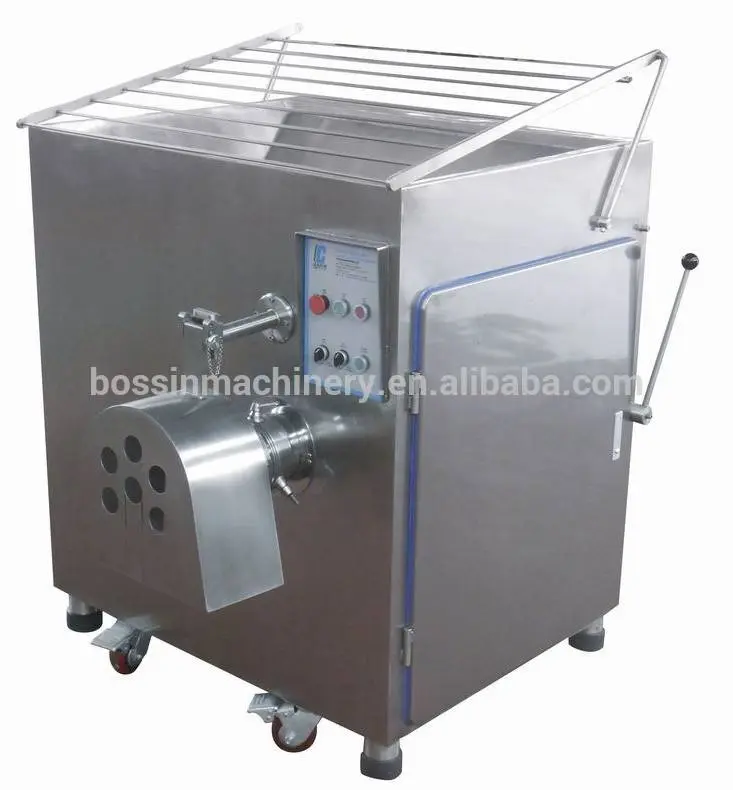
Aug . 16, 2024 17:21 Back to list
Exploring the Production of Commercial Meat Grinders in Manufacturing Facilities
Commercial Meat Grinder Factories An Overview
In today's culinary world, the demand for high-quality ground meat products has skyrocketed, primarily due to the growing trend of gourmet burgers, sausages, and other meat-related delicacies. This surge in demand has paved the way for the establishment and growth of commercial meat grinder factories. These factories play a crucial role in the meat processing industry, providing the essential equipment needed for food establishments to churn out consistent, high-quality ground meat.
The Importance of Meat Grinders
Meat grinders are vital in the food industry, particularly in butcher shops, restaurants, and catering services. They enable chefs and meat processors to achieve the desired texture and quality of ground meat efficiently. Commercial meat grinders differ significantly from their home counterparts in terms of size, power, and capacity. The heavy-duty models found in commercial settings are designed to process larger volumes of meat quickly, ensuring a steady supply of freshly ground meat for various dishes.
Types of Commercial Meat Grinders
There are various types of commercial meat grinders available, catering to different needs and preferences. The most common types include
1. Manual Meat Grinders These are operated by hand and are suitable for small-scale operations. While labor-intensive, they can deliver high-quality grind, making them popular among artisan butchers.
2. Electric Meat Grinders These are more common in commercial settings due to their efficiency and speed. They come in various sizes and capacities, ranging from small countertop versions to large industrial models capable of grinding hundreds of pounds of meat per hour.
3. Meat Grinder Attachments Many food service operations utilize meat grinder attachments that can be fitted onto existing kitchen equipment, such as mixers. This versatility can save space and money while still meeting grinding needs.
commercial meat grinder factories

Manufacturing Process of Meat Grinders
The manufacturing of commercial meat grinders involves several crucial steps to ensure the end products are durable, efficient, and safe for food processing. Factories focus on high-quality materials, often using stainless steel for the body and grinding components to prevent rust and contamination.
The manufacturing process typically includes designing, prototyping, and rigorous testing. Engineers and technicians work together to create models that comply with safety standards and regulations, ensuring that the grinders can withstand the demands of commercial use. Quality control is an essential aspect of the production line, where each unit is tested for performance and durability before being shipped to customers.
Economic Impact of Meat Grinder Factories
The rise of commercial meat grinder factories has had a significant economic impact on the food processing industry. By providing essential equipment, these factories help local businesses streamline their operations, reduce processing costs, and improve product quality. The increased efficiency often translates to higher profitability for restaurants and butcher shops, ultimately benefiting consumers through better products and competitive pricing.
Moreover, the growth of meat grinder manufacturing has also stimulated job creation in various sectors, from engineering and production to sales and customer service. This ripple effect contributes positively to local economies, particularly in regions where meat processing is a primary industry.
Future Trends
As the culinary landscape continues to evolve, so will the technology behind commercial meat grinders. Innovations, such as automation and smart technology, are beginning to influence the design and functionality of these machines. Factories are exploring ways to incorporate AI-driven technology for better efficiency, precision, and maintenance.
In conclusion, commercial meat grinder factories play a vital role in the food industry, meeting the increasing demand for high-quality ground meat. By providing essential equipment and creating economic opportunities, these factories will continue to be a significant component of the meat processing supply chain, adapting and evolving with industry trends.